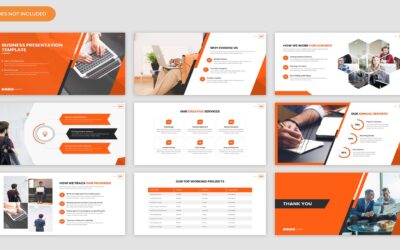Introduction
In today’s digital age, the art of presentation has evolved beyond static slides and monotonous delivery. Audiences crave interactive experiences that captivate their attention and encourage active participation. Interactive presentations leverage technology to create dynamic, immersive, and memorable experiences that leave a lasting impact on the audience. In this blog post, we’ll explore the benefits of interactive presentations and provide additional insights on how to engage your audience with technology.
Gamification Elements
Integrating gamification elements into interactive presentations can significantly enhance engagement and participation. Gamified features such as quizzes, challenges, leaderboards, and rewards create a sense of excitement and competition among audience members, motivating them to actively engage with the presentation content. By gamifying the learning experience, presenters can make their presentations more enjoyable and memorable for attendees.
Virtual Reality (VR) and Augmented Reality (AR)
Embracing virtual reality (VR) and augmented reality (AR) technologies can take interactive presentations to the next level. VR and AR experiences allow presenters to immerse the audience in virtual environments, simulate real-world scenarios, and provide interactive demonstrations. Whether showcasing products, exploring historical sites, or simulating training scenarios, VR and AR add a new dimension of interactivity and engagement to presentations.
Interactive Storytelling
Storytelling is a powerful tool for engaging audiences and conveying messages effectively. Interactive presentations can leverage storytelling techniques to create compelling narratives that draw the audience in and keep them engaged from beginning to end. By incorporating interactive storytelling elements such as branching scenarios, choose-your-own-adventure narratives, and interactive timelines, presenters can craft memorable stories that resonate with the audience on an emotional level.
Live Polling and Audience Feedback
Real-time polling and audience feedback features enable presenters to gauge audience opinions, gather feedback, and adapt the presentation in real-time based on audience responses. Platforms such as Mentimeter, Poll Everywhere, and Slido allow presenters to create interactive polls, surveys, and Q&A sessions that facilitate two-way communication with the audience. By actively involving the audience in the presentation process, presenters can ensure that their content remains relevant and engaging.
Collaborative Presentations
Collaborative presentations enable multiple presenters or audience members to contribute to the presentation in real-time, fostering collaboration and co-creation. Tools such as Google Slides, Microsoft PowerPoint Online, and Prezi Video allow presenters to invite collaborators to edit or add content to the presentation remotely. This collaborative approach promotes teamwork, creativity, and knowledge sharing among presenters and audience members, resulting in a more inclusive and interactive presentation experience.
Data Visualization and Infographics
Visualizing data and information through interactive charts, graphs, and infographics can make complex concepts more understandable and engaging for the audience. Interactive data visualization tools such as Tableau, Power BI, and Infogram allow presenters to create dynamic and interactive visualizations that enable audience members to explore data and draw insights in real-time. By presenting information visually and interactively, presenters can enhance comprehension and retention of key concepts.
Accessibility and Inclusivity Features
Ensuring that interactive presentations are accessible to all audience members, including those with disabilities, is essential for creating inclusive presentation experiences. Presenters should consider incorporating accessibility features such as screen reader compatibility, keyboard navigation, and alternative text for multimedia content to accommodate diverse audience needs. By making presentations accessible to everyone, presenters can ensure that all audience members can fully participate and engage with the content.
conclusion
Interactive presentations offer a wide range of benefits for engaging audiences and delivering impactful presentations. By incorporating gamification elements, leveraging VR and AR technologies, embracing interactive storytelling, facilitating live polling and audience feedback, enabling collaborative presentations, visualizing data effectively, and prioritizing accessibility and inclusivity, presenters can create immersive and memorable presentation experiences that captivate and inspire their audience. As technology continues to evolve, the possibilities for interactive presentations are limitless, providing presenters with endless opportunities to engage and delight their audiences.
Search
Categories
- AI 4
- Analytics & Data Science 16
- Blogs 8
- Brand Identity 23
- Business 10
- CMS & LMS 22
- Development 1
- Digital Marketing 20
- Digital Signage 12
- E-commerce 6
- Education & E-Learning 1
- Enterprise solution 15
- Events 2
- Food & Grocery 1
- Internet of Things 9
- Mobile App Development 15
- News 5
- Open Source Development 12
- SEO Search engine optimization 2
- Software 1
- Staff Augmentation 3
- Uncategorized 24
- Web Design 1
- Web Development 19
- Web Security and Performance 19
- Website Development 2
- WordPress Development 3
Recent Posts
-
Les avantages de choisir un casino proposant des free spins attractifs pour les joueurs
-
Arlequin Casino et ses promotions exclusives qui transforment les jeux en ligne
-
Tendances actuelles des casinos Neosurf et leur impact sur l’industrie du jeu
-
مقارنة شاملة بين كازينوهات قطر التي تعتمد على استخدام VPN
-
Les bénéfices de l’utilisation de Paysafecard dans les casinos en ligne sans soucis


